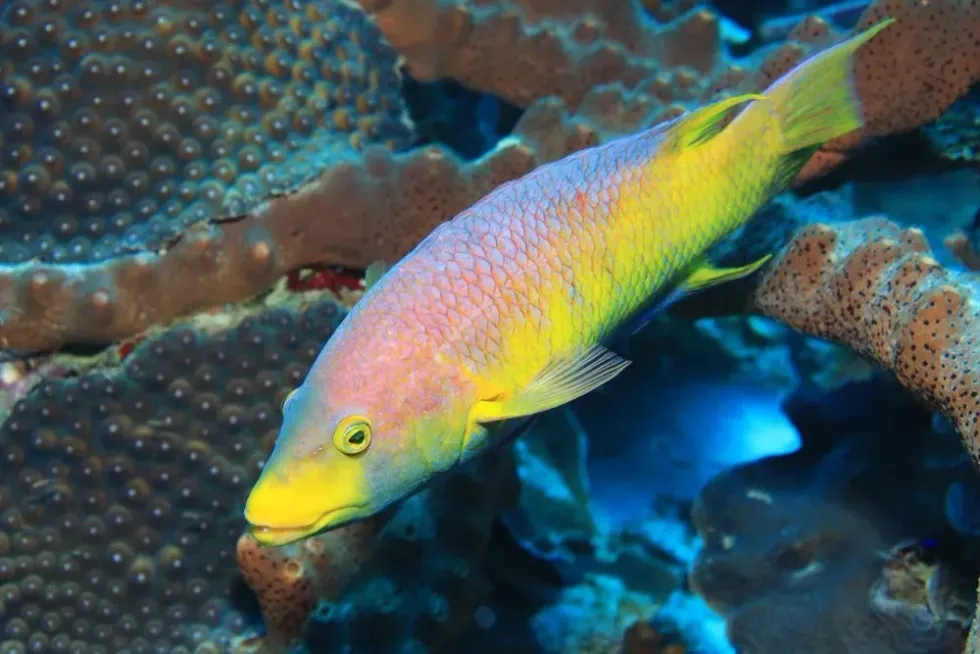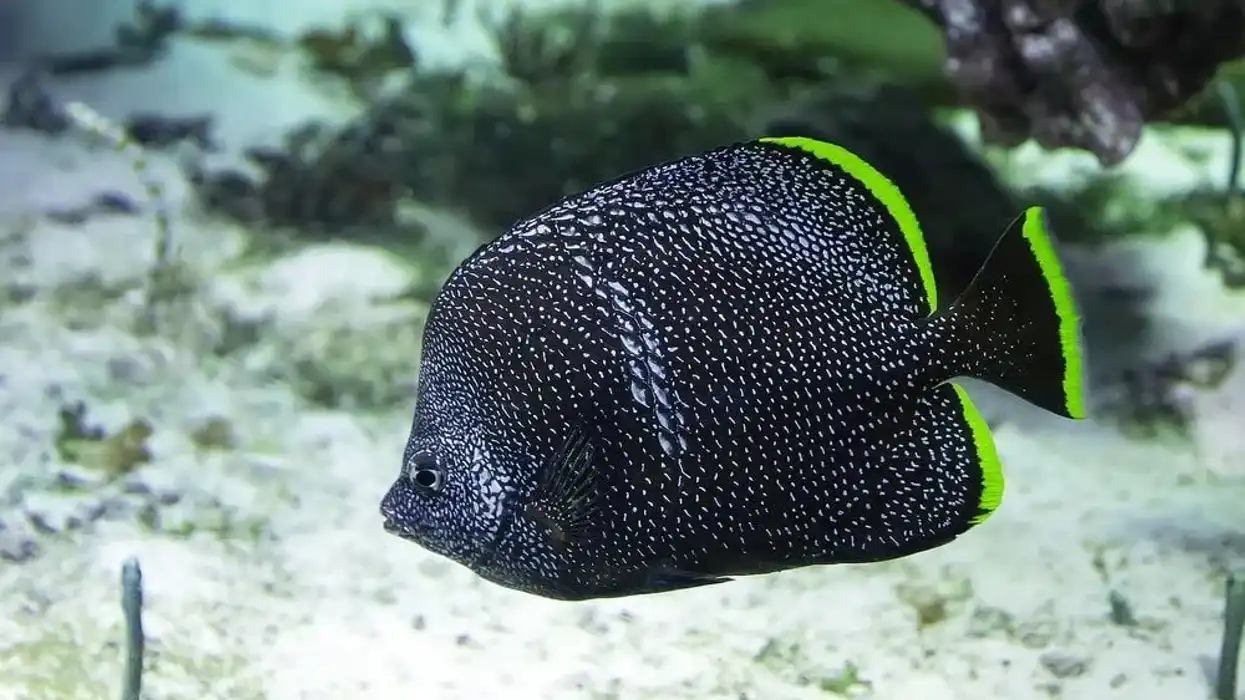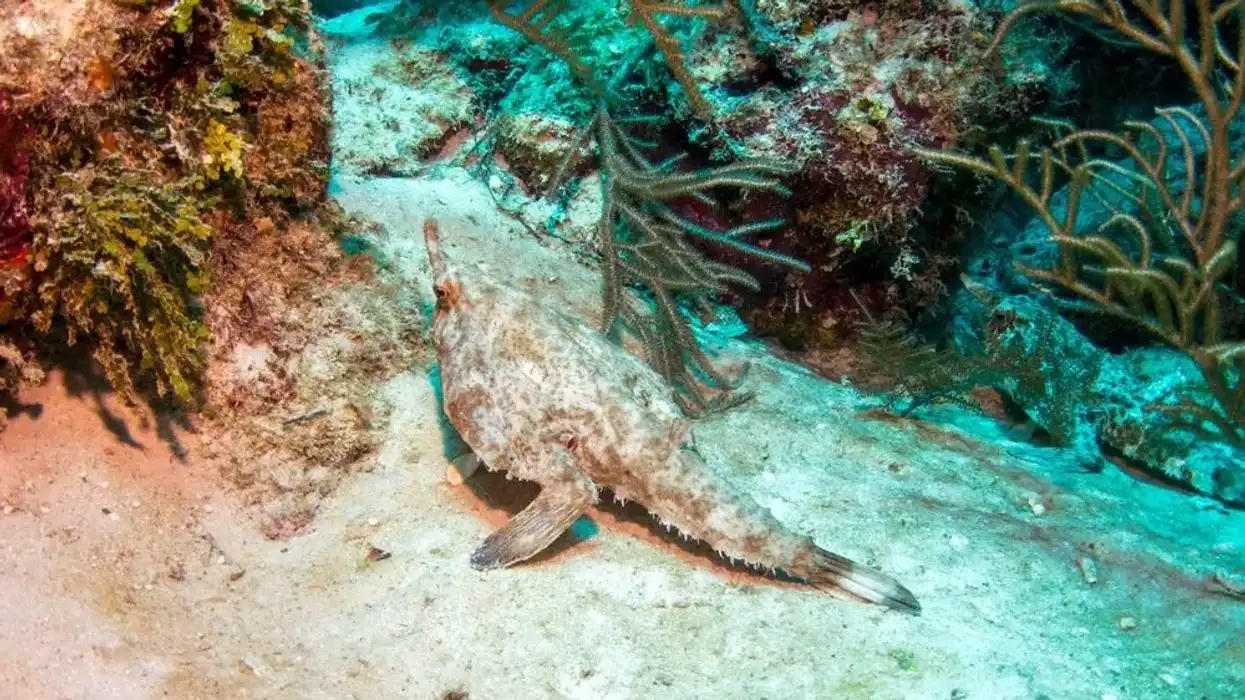We are aware of catfish, lionfish, and frogfish but what about hogfish? A hogfish (Lachnolaimus maximus) is generally a large fish native to the Western Atlantic Ocean and the Gulf of Mexico.
The reason it got its name as such, is due to the fact that it shares the distinctive feature of having a pointy snout like the hogs that rule the land.
The hogfish received its fame from possessing this special appearance which makes it easy to spot or distinguish added with the delicious flavor hogfish meat offers in dishes. This makes hogfish a popular catch among recreational fishermen as well.
In the fishery industry in Florida, it is known to be one of the most overfished types of fish leading to it being critically endangered.
If you want to read more interesting facts about hogfish, lachnolaimus maximus, you can check out these interesting fun facts about this unique-looking delicious fish including rooster hogfish facts, Spanish hogfish facts, Mexican hogfish facts, and the like.
If you like to read up on animal facts you could also check out Pacific salmon and codfish.
Hogfish Interesting Facts
What type of animal is a Hogfish?
A hogfish is one of the well-known kinds of ray-finned fish which can be easily recognized by their pig-like snout which is their distinctive feature.
What class of animal does a Hogfish belong to?
The hogfish belongs to the class of bony fish or Actinopterygii.
How many Hogfish are there in the world?
Hogfish are highly consumed due to their taste and nutritional value which leads to a lot of fishermen and fishing companies actively overfishing hogfish.
We are not aware of the exact number of hogfish in the world and, while there still are plenty of hogfish around, the fishing of this species stands to be highly regulated by the South Atlantic Fishery Management Council and the Florida Fish and Wildlife Conservation.
Where does a Hogfish live?
Hogfish inhabit the water of the western part of the Atlantic Ocean and are known to appear from the southern part of Bermuda and North Carolina running along the Caribbean Sea and the northern part of the Gulf of Mexico, leading to the northern coastal areas of South America.
It is one of the most popular dishes found in the shallow waters and the reef of Florida and along the length of the Caribbean islands.
What is a Hogfish's habitat?
Hogfish like roaming around the reef waters with gorgonians or soft corals with juvenile hogfishes observed to be swimming among seagrass beds. They reside 10-100 ft (3-30m) below the waters and are can be found on the edges of the reef and in locations with rock bottoms.
Who do Hogfish live with?
Hogfishes live in groups or schools which consist of a single male and his harem of multiple females of the species. The hogfish males mate with all the females in their groups and protect them from predators and other groups as well.
How long does a Hogfish live?
Hogfish live up to 11 years which considered to be quite a good number of years as compared to some other less fortunate fish in the sea.
How do they reproduce?
In this initial stage, the male courts the female hog which is followed by both the genders releasing their gametes into the surrounding waters. This is when the fertilization occurs and the fertilized eggs then develop into larvae at a rapid pace which hatches in about 24 hours since the initiation of this process.
The larvae stage though, lasts for quite some time, up to several weeks, and ends when the hogfish turn into juveniles, finally moving out on their own to different parts of the waters.
What is their conservation status?
Hogfish currently stand as being Vulnerable under the IUCN conservation status listing.
There are quite a bit of hogfish in the open Western Atlantic Ocean but the fishing of this highly delectable species is being highly regulated in most fishing-prone territories.
For instance, Florida Fish and Wildlife Conservation Commission only allows this fish to be netted during the time between the first day of May to the last day of October with each harvester being allowed to hunt a single fish in the Atlantic Federal waters.
In the Gulf Federal waters, one is allowed to carry a single bag where one can fish and keep up to five hogfish.
Hogfish Fun Facts
What do Hogfish look like?

The hogfish can be distinguished easily amongst other fishes because of their large body shape which compressed laterally. They are known and named famously for their very long snout, which is used to hunt for food buried in the sand.
How cute are they?
Hogfish, despite their length and their adorable snout, cannot be counted as a very cute type of fish because they aren't kept as pets, but largely towed to be eaten. Though, they are very fascinating to look at.
How do they communicate?
Very little is known about how hogfish communicate with other fish, but they are known to court females during the mating season.
How big is a Hogfish?
Hogfish are relatively big compared to other wrasses as they can grow up to 3 f (0.91 m) in length. They might be anything from 10 - 36 in (25.4-91.4 cm) long.
How fast can a Hogfish swim?
The exact speed that an average hogfish can reach is unknown but hogfishes are fast enough to sometimes stun fishermen, much to their dismay.
How much does a Hogfish weigh?
Hogfish are big wrasses weighing about eight to 24 lb (10.8 kg) in weight with hogs weighing upwards of 22 lb (9.9 kg) a common sight.
What are their male and female names of the species?
Hogfish females and males do not have any distinctive name to distinguish between their sex.
What would you call a baby Hogfish?
Baby hogfish do not have any specific name to distinguish them between infant hogfish and adult hogfish. The babies, right after they hatch, are called larvae, which later develop into juvenile hogfish before they mature into adults.
What do they eat?
Hogfish are carnivores who eat anything ranging from mollusks, sea urchins, snails, worms, mussels, and even smaller fishes, shrimps, and squids. Even crabs and various kinds of crustaceans are not of its diet or menu.
Are they dangerous?
Marine algae are known to produce toxins that can be found in the organs of marine carnivorous fish like hogfish. These toxins are known to be very potent and consuming them in large amounts can even lead to human fatalities or even death.
Would they make a good pet?
They can make good pets but they are quite violent to other smaller fishes and they can only be housed in huge aquariums which can hold at least 70 gal (264.9 L) of water. Hogfish are big and require a lot of space to move around.
Did you know...
Hogfish possess canines that can be used to catch and shred shellfish. The males of the species are much more brightly colored than the females.
There is only one male in a group of hogfish till one of the females grows up and turns into a male, after which, the leading male will be decided and contested. Similar to wrasses, hogfish are sequential hermaphrodites, which translates to the fishes of this kind changing their sex during particular life stages.
In the case of the hogfish, it is protogynous in nature and the fish starts out as a female fish who later matures into a male.
This generally takes place when the fish is about three years old and around 14 in (35.5 cm) long. The color-changing hogfish is also known to be able to see with its skin.
The hogfish uses its elongated snout-like structure to rummage and search for various kinds of shrimps and crustaceans that stay buried under the sand. This is why hogfishes like hanging out near sand bottoms and rock bottoms.
Catching hogfish is quite easy as well, but the bait of the usual food that hogfish usually eat such as mollusks and crustaceans is integral. Unlike its famous name related to the lang animal, the hog, the hogfish is not a snapper.
Do people eat Hogfish?
Yes, people eat hogfish because of its delicious taste. It is a popular dish in Florida and a lot of other areas. Hogfish flesh when cooked looks white and lean and has a mild taste with a hint of sweet flavor.
Naming the Hogfish
The appearance of a hogfish is similar to that of a land animal called the hog. Their distinctive feature is their pig-like snout like the hogs.
Here at Kidadl, we have carefully created lots of interesting family-friendly animal facts for everyone to discover! Learn more about some other fish including smelt and remora.
You can even occupy yourself at home by drawing one of our hogfish coloring pages.










